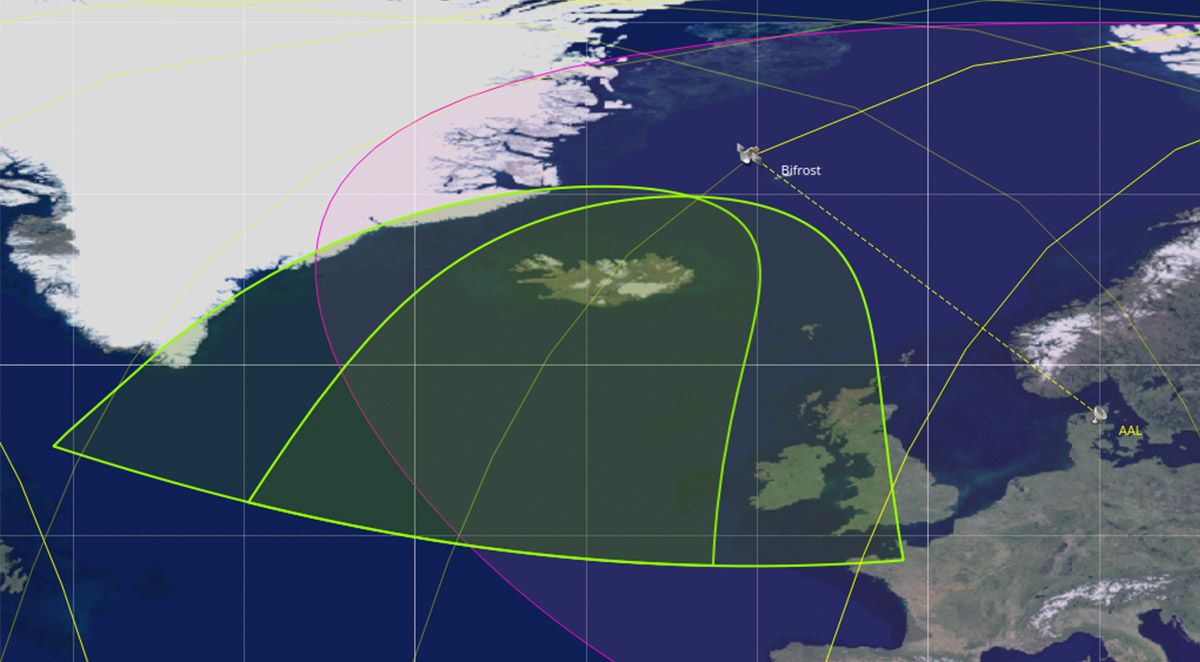Celebrating 1 year of Gravity Space GS-1
On May 1st 2024 Space Inventor celebrated an important anniversary - one year since the launch of the Geostationary spacecraft GS-1! The CubeSat weighs approximately 23 kg and is exclusively built by Space Inventor, for Gravity Space, using only Space Inventor’s products, apart from the thrusters and the payloads.
GS-1 was launched on May 1st 2023 by SpaceX’s Falcon Heavy and was deployed 1000 km under the Geostationary orbit (approx 34 600 km from Earth), and since then has been operated and maintained by Space Inventor.
The deployment of GS-1, 4h and 40 min after the launch of SpaceX’s Falcon Heavy. |
After a few weeks of commissioning, the spacecraft began its orbit raise up to the Geostationary orbit, operating on a tight schedule. After two months of consequent thrusting maneuvers, GS-1 entered its first GEO home at longitude 116.5 deg east, right over the island of Borneo!
 Altitude of the spacecraft during the orbit raise (June - mid August 2023). |
The Geostationary orbit (for short - GEO) is an orbit where satellites make one full rotation around Earth for the same time as the Earth makes a rotation around itself (i.e. 24h). Therefore, from Earth’s perspective, the satellites in GEO appear to be “locked” in space, hence the name Geostationary.
GS-1 stayed over Borneo for 3 months, during which the operation team performed payload testing, i.e. camera and radio tests. Then the spacecraft began its first relocation - further east over the Pacific ocean. Currently, GS-1 is on its way to its third home which is going to be west of Malaysia. You can follow GS-1 live here: https://www.n2yo.com/?s=56372&live=1
 |
What does it mean for a GEO spacecraft to relocate and change its orbit slot?
The spacecraft uses its electric thrusters to change its orbit and travel either under or over the GEO orbit. Lowering the orbit means that the orbit velocity increases, so the spacecraft would perform a full orbit slightly faster than 24h. Essentially, seen on the world map, the satellite would move east.
However, electric thrusters are power hungry, so during maneuvers, GS-1 switches between charging and thrusting every 15 minutes or so. This means that during the 2-month-long orbit raise in the summer of 2023, the satellite performed over 6000 attitude (orientation) changes!
To ensure those re-orientations are performed swiftly, the automatic control of the satellite is tuned relatively aggressively. Nevertheless, the pointing error of the spacecraft still converges to about 50-60 arcseconds (0.014 deg), which is a testament to the precision of the avionic products (sensors and actuators) produced by Space Inventor.
Congratulations to Gravity Space as spacecraft owner of GS-1, which concluded its 368th orbit around the Earth, and its first revolution around the Sun.
"Space Inventor did an amazing job building the spacecraft, as well as providing first class operations over the last year,”
Mark Thompson, Gravity Space CEO
Popular articles




